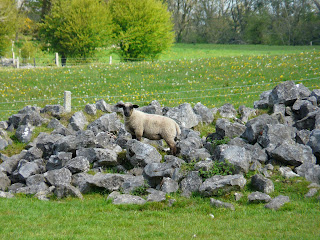
E.coli enterotocamenia is a contagious disease which is also known as watery mouth or rattle belly.
Lambs usually become victim to this disease when sucking on a dirty teat.
It is often found in young lambs and can lead to death if not treated on time.
The lamb can die within hours of infection.
Young lambs do not have the same defences to protect them form the e.coli bacteria, therefore lambs between one and three days old are more susceptible to an infection of e coli.
If there is an outbreak on a farm up to a quarter of the lambs may be infected, with two thirds of those infected not surviving.
The lambs contract the e coli through the ingestion of the e coli bacteria.
A lack of adequate quality colostrum ingestion and absorption increases the risk of infection of watery mouth.
There are more cases in lambs who are housed in sheds than the lambs that are outdoors.
There are vaccinations available for e coli (watery mouth).
Most sheep carry a wide range of bacteria, that they themselves are immune against.
They excrete the bacteria in their droppings. These droppings lead to the environment being contaminated with bacteria. The new born lambs to not have the same resistance against these bacteria that the sheep have.
The consumption of a large amount of e coli bacteria by the lamb, that then replicate at an alarming rate in the intestine causes the illness.
Contaminated dust in the air can cause the illness.
The lambs naval can be an entry point for the bacteria.
The lambs can contract e coli from oral contact with contaminated bedding.
The unclean udders of their mothers can lead to infection.
Their mothers wool can be contaminated with the e coli and the lamb may suck on it.
Young lambs are more at risk of contracting this disease if they are living in overcrowded conditions.
If there is poor hygiene the lambs risk of infection increases.
The lambs should not be living in wet damp conditions if you want them to be healthy and disease free.
Symptoms.
The lamb will appear quiet and lie alone in the pen.
The lamb will appear dull, tired and depressed.
They will appear full as constipation is one of the symptoms.
The lambs mouth will be cold to touch, it will be colder than the rest of the body.
The lamb will be excessively salivating.
The lambs lower jaw will be wet.
In rare cases there will be diarrhoea.
The lamb will be reluctant to eat.
If you pinch the skin on the back of the lambs neck and it stays up then this is a sign of dehydration.
If you wake the lamb and it is slow to get up and does not stretch then there is a problem.
Most lambs after a good rest will stretch just like humans like to stretch.
Rattle belly - the gentle shaking of the infected lambs results in a sound coming from their stomach.
Treatment
The quicker the infection is treated the more positive the outcome.
Broad spectrum antibiotics need to be administered.
Re-hydration is key to the treatment, the lost fluids need to be replaced.
You can buy electrolyte tablets or solutions from your vet, they need to
be administered to the lamb for re-hydration.
You can also make a home made electrolyte solution though shop bought is best.
An enema can be performed to ease the constipation in the lamb. This can be done by using a syringe and warm soapy water. The warm soapy water is injected up the lambs behind.
A mild laxative can be given to the lamb.
A probiotic will help in getting the lambs digestive system fully functioning again.
While the lamb is ill it is best to keep him under a heat lamp or in your kitchen beside the range, as the lamb needs to be warmed up.
The antibiotics, electrolytes and TLC should increases the chances of recovery.
Sadly the death rate is high with this illness.







ReplyDeleteI started on COPD Herbal treatment from Ultimate Life Clinic, the treatment worked incredibly for my lungs condition. I used the herbal treatment for almost 4 months, it reversed my COPD. My severe shortness of breath, dry cough, chest tightness gradually disappeared. Reach Ultimate Life Clinic via their website www.ultimatelifeclinic.com . I can breath much better and It feels comfortable!